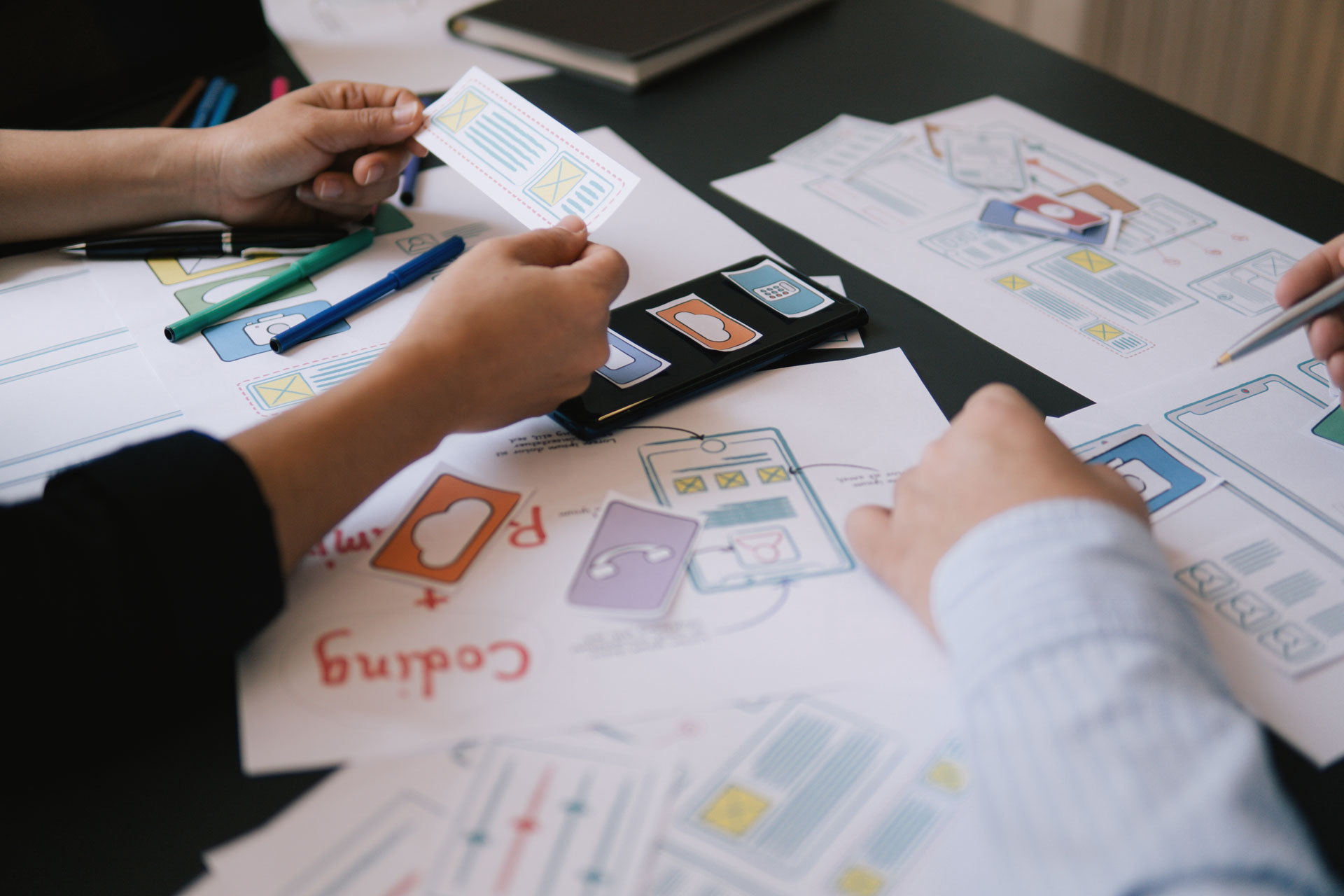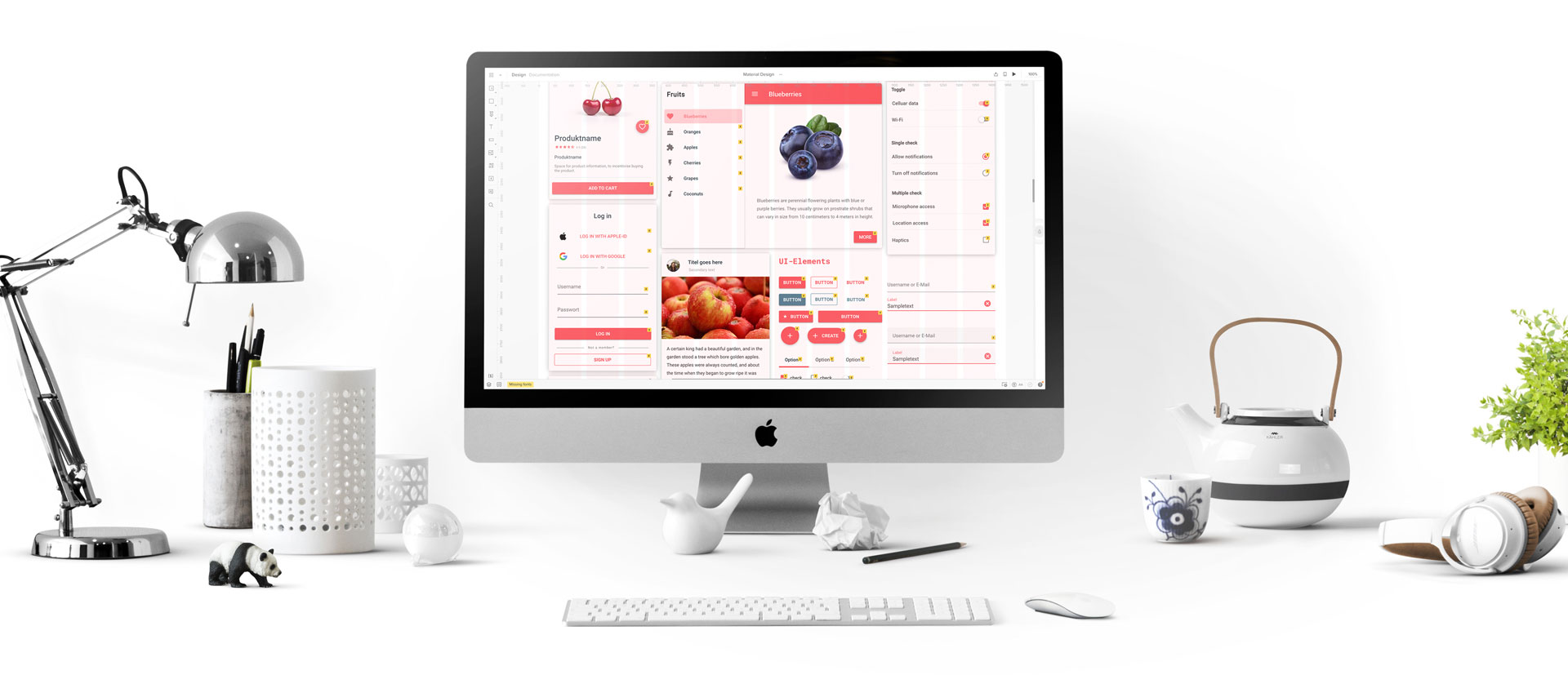
In a Design Sprint, We Optimise Your Website in Next to No Time
A design sprint is a special method used by teams to work on a solution to a specific challenge in a focused manner and for a limited period of time. The best-known example of this approach is provided by Google.
The Benefits of Design Sprints at a Glance
- An efficient way to quickly visualise a new idea
- All stakeholders participate actively and creatively, developing an understanding of the challenges, goals, risks and perspectives
of the other stakeholders - All stakeholders internalise the user-centred approach to
user interface design
As a Result of the Joint Work, You Will Receive a Prototype That
- was created in no time at all
- was co-developed by all relevant stakeholders
- was validated by users in a usability test
- visualises the idea for further specifications and subsequent development

The Five Phases of a Design Sprint
Understanding the Problem
In order to ensure that all stakeholders are on the same page, the first phase focuses on
- analysing the customer journey and target audience
- weighing up opportunities and risks
- setting goals
- conducting expert interviews
Idea Generation
Time to get creative! All stakeholders put their heads together and develop new ideas. In this phase, we make use of
- research
- mood boards
- solution sketches
Decision
The idea generation phase is over. The task at hand is to pick out the best ideas to be able to develop an early sketch. Now it is time to
- merge the best ideas
- create a storyboard and a test plan
Prototyping
The next step is to implement the new ideas in an initial testable application so that the user tests are as realistic as possible. We then proceed to
- the development of a prototype
- the creation of content
Usability Testing
In order to ensure user acceptance of the new feature and to determine further steps, this is followed by
- user tests and feedback
- evaluation of the feedback
- prioritisation: which features make it into the development backlog and which ones need more refinement?
Traditional or Modified – You Choose the Type of Design Sprint!
Conventional Design Sprint
Conventional design sprint based on the Google Ventures model: 5 days of 8-hour intensive workshops.
- Duration: 1 week (approx. 40 hours of workshop time)
- Participants from your company: 4–7
- It is recommended to hold the workshops on site
- Prototyping is limited to 8 hours; the outcome depends on the problem
Individual Design Sprint
It is similar to a conventional design sprint, but the duration is extended to give the participants time for their daily business.
- Duration: 3 weeks (approx. 10 workshops of
3–4 hours each) - Participants from your company: 4–7
- The workshops can be held remotely or on site
- A more comprehensive (high-fidelity) prototype can be created since it is possible to schedule more time
Opportunities and Limitations of Design Sprints
Design Sprints Are Just What You Need to
- come up with new ideas and develop features
- quickly visualise a new idea
- directly involve stakeholders from different business areas in the development of new ideas and features
- validate new ideas in a user-centred way with usability tests
A Traditional Project Approach Is the
Better Choice If
- large projects such as a redesign or restructuring are on the agenda
- the desired features are very complex (e.g. the creation of a customer portal)
- stakeholders do not want to actively participate in the development of the feature
- stakeholders' calendars cannot be blocked out for the duration of the sprint
We Will Find the Right Approach to Implement Your Project Efficiently
Modern design sprint methods are also part of our traditional project approach. From the first idea and a detailed concept to a tangible prototype: together with you, we create unique user experiences, increase customer satisfaction and strengthen your brand.
Other Services in the Field of UX Design and Usability
Do you want to learn more? I'm looking forward to hearing from you!
